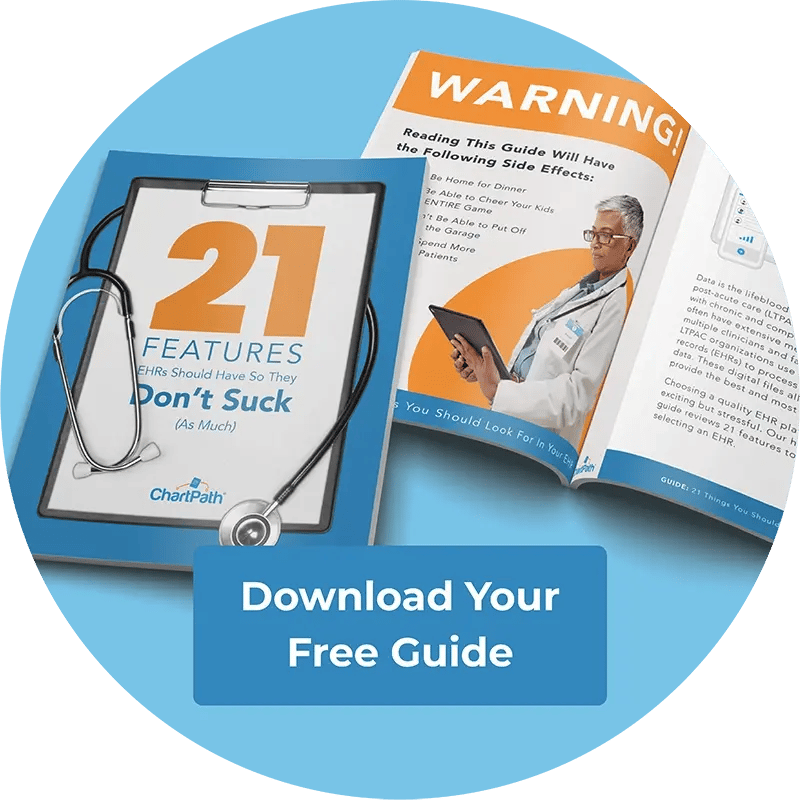Understanding the CMS GUIDE Model

As the United States's population ages, more people are living with dementia and related conditions. According to the Alzheimer’s Association, an estimated 7 million people are currently living with Alzheimer’s disease. This number is expected to grow to 13.8 million by 2060. As the population living with these conditions grows, so will the need for specialized care.
In 2024, the Centers for Medicare and Medicaid Services (CMS) launched the GUIDE model, a test aimed at improving care for people with dementia. People living with dementia often experience depression, restlessness, agitation, and irritability. It is a taxing condition for patients and caregivers alike. Programs such as GUIDE aim to ease this burden on unpaid caregivers and providers while improving the patient's quality of life.
What is the CMS GUIDE Model?
The GUIDE Model is a comprehensive approach to caregiving focused on reducing fragmented caregiving and improving access to care for all dementia patients. Existing healthcare systems offer disjointed care to dementia patients, many of whom need 24/7 support.
People with dementia often end up in the emergency room (ER). For people over 65 years of age, dementia patients make up about about 7% of all ER visits. A need for constant care, costly ER visits, and other factors frequently cause a financial burden for caregivers, disproportionately impacting Black, Hispanic, Asian American, Native Hawaiian, and Pacific Islander patients.
GUIDE aims to reduce this disparity by educating and offering more support to unpaid caregivers. With better access to resources, dementia patients can safely stay in their homes for longer without causing emotional, physical, or mental strain on their family members and other unpaid caregivers.
Key Components of the GUIDE Model
The CMS GUIDE Model’s approach to dementia care programs focuses on three components to improve overall care for people with these conditions.
Care Coordination and Management
As of 2024, 390 organizations, including long-term care providers, hospice agencies, and related medical providers, are testing the GUIDE Model. Under the GUIDE Model, the participating agency provides patients and their families with a Care Navigator. Care Navigators help patients and their support systems access clinical and non-clinical services. For example, they may help set care plans or connect patients to organizations that help with transportation, meals, and other daily needs.
Caregiver Support
Caring for people with dementia can become overwhelming, especially when you aren’t trained in memory care. People with dementia often wander or ask questions repeatedly. They can also become irritable and aggressive. For your patients' loved ones, these behaviors can be frustrating and scary.
The GUIDE Model supports caregivers through training programs and other educational materials. Family members or others helping a patient can access their Care Navigator 24/7 to ask questions or just to talk when they’re feeling overwhelmed.
Respite Services
Friends and family members caring for a loved one with dementia also have their own lives to live. Coordinating care services and checking in on their loved ones while juggling jobs and other responsibilities can be stressful. It also leaves little time for self-care.
To alleviate this burden, the CMS GUIDE Model offers respite services up to an annual cap. Under this program, an unpaid caregiver can call their Care Navigator to arrange a much-needed break. Their Care Navigator can connect them with in-home support, an adult day care, or a nursing home to take over their duties while they handle their own lives or simply relax for an afternoon.
Trying to go it alone can quickly burn out caretakers. They may become depressed and tempted to withdraw from their support systems. Respite services put less pressure on a patient’s loved ones so they can keep their mental health intact.
Eligibility and Participation
To be eligible for the GUIDE program, patients need to be enrolled in Medicare Parts A and B and have a confirmed dementia diagnosis. If you run a participating agency, eligible patients cannot be enrolled in Medicare Advantage or the Program of All-Inclusive Care of the Elderly (PACE). The patient should not be using the hospice benefit, and they can’t be a resident in a long-term facility.
Current participants in the GUIDE program are all Medicare Part B Providers. The program’s application period closed in November 2023, with implementation set to begin in July 2025. You can keep an eye on the CMS website to see if the program will accept new applicants before its initial 8-year cycle ends.
Benefits to Patients and Caregivers
The GUIDE Model benefits patients and caregivers alike. Under current healthcare systems, a patient’s primary care provider is often the first to diagnose dementia and related conditions. However, many of these providers aren’t confident in their ability to recognize and manage dementia.
Dementia patients may not recognize the condition right away, leaving their loved ones to monitor symptoms and help with daily routines. Before GUIDE, a patient may have relied on their children or grandchildren to take them to appointments, remind them to take their medication, clean the house, and prepare meals.
Under the GUIDE Model, a primary care physician who notices that their patient is showing signs of dementia can connect their patient to a network of resources. Their Care Navigator steps in to train family members on proper caregiving and connect the patient to service providers who can clean their house and help them with meals. The patient’s caregiving team can comprehensively assess the patient as soon as a doctor suspects they may have dementia, giving both the patient and their caregivers the personalized care plan and resources they need.
Implications for LTPAC Providers
Agencies can participate in the GUIDE Model under the established program participant track or the new program participant track. If you’re already offering a comprehensive approach to dementia care, you can stick with your existing model to deliver the GUIDE requirements.
If you don’t already have a comprehensive program, you can work with CMS to develop one. This plan helps you coordinate multiple caregivers to care for your patient’s mental and physical health while improving their ability to live comfortably at home.
A well-coordinated approach to dementia care reduces caregiver stress by as much as 50%. It also results in fewer patient emergency room visits and saves your agency money on treatment.
Even if you’re not currently participating in the GUIDE Model, you can improve patient outcomes by taking a comprehensive approach to dementia care.
Blog Post Tags
GUIDEGet Awesome Content Delivered Straight to Your Inbox!
Posts by topic
- EHR
- Better Charting
- LTPAC
- AI
- RCM
- Compliance
- Healthcare Trends
- Press Release
- GUIDE
- reporting
- Artificial Intelligence
- Assisted Living
- Automation
- Behavioral Health
- Business
- Events
- General
- MIPS
- Operations
- Patient Outcomes
- Physician Billing Services
- Population Health Management
- Resumption of Care
- SNF
- TCM
- Value Based Care
- eCR
- interoperability
- partners
- regulations
- regulatory See All See Less




